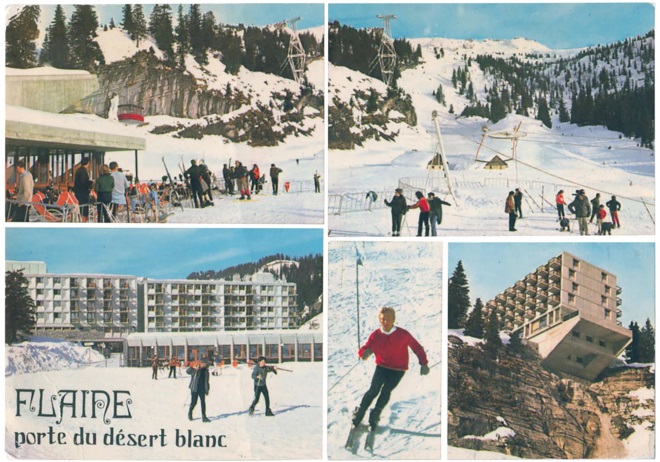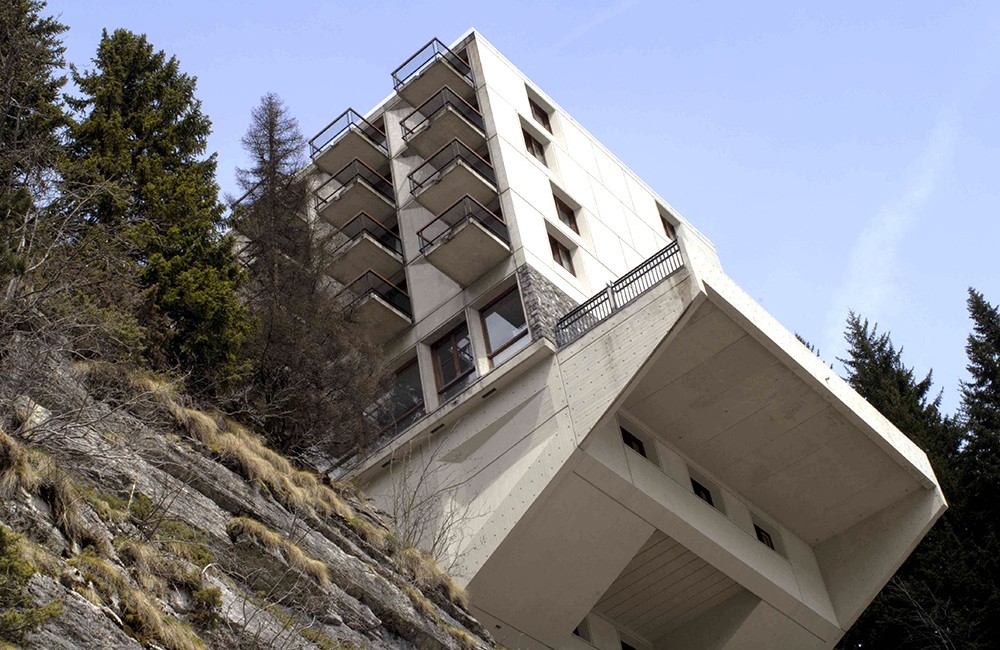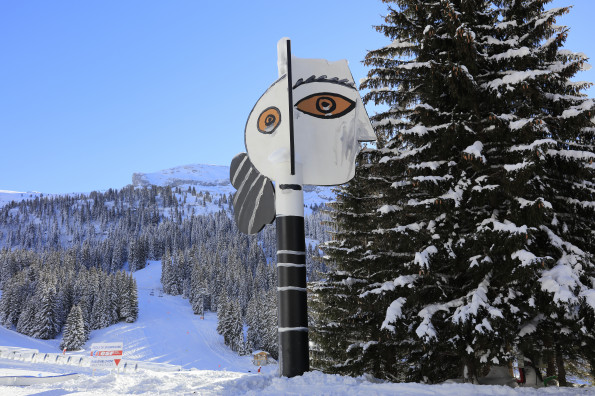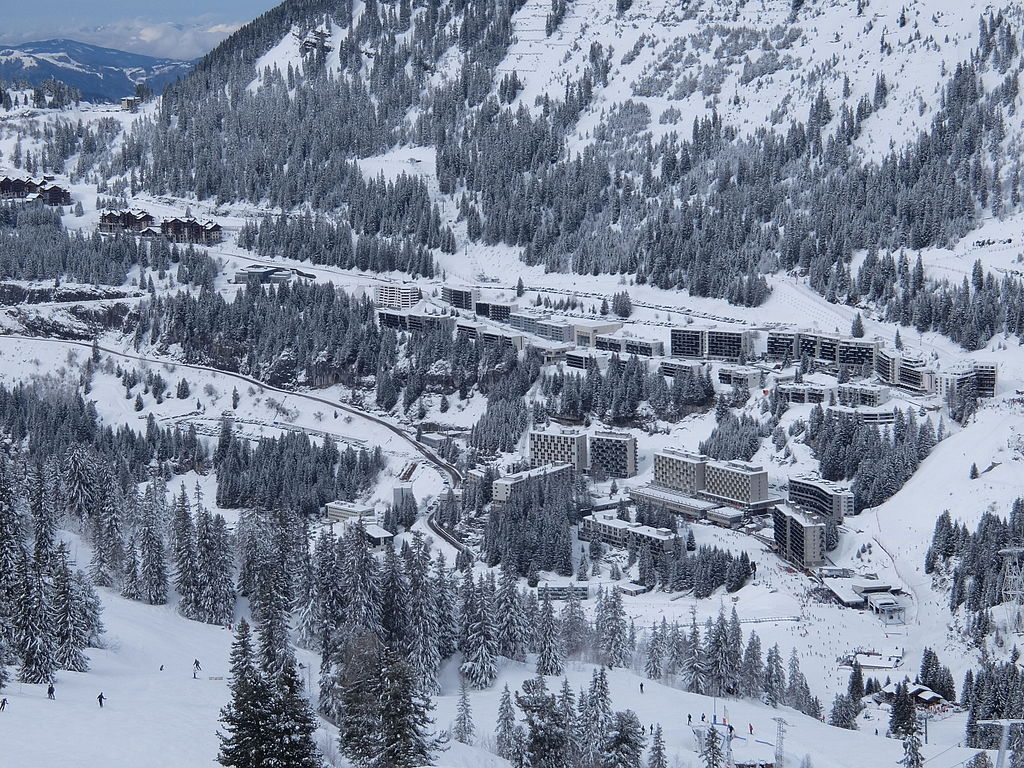The French ski resort of Flaine can provoke mixed reactions. Some consider it to be a concrete jungle, others to be a masterpiece of modernist architecture.
A Modernist masterpiece
Flaine was commissioned as a project in 1960 by the wealthy couple of Eric and Sylvie Boissonnas.
Lovers of art, modernity and the mountains, the pair bought the rugged block of land with the idea of creating a ski destination that would be a Modernist “masterpiece”.
Their lofty goal was to build a prototype of urban planning, architecture and design, the immediate profitability of which would be less important than aesthetics and respect for the environment.

Marcel Breuer leads the way
Their intentions to create something different were clear from the start when they engaged architect Marcel Breuer to work on the project.
Breuer was from the Bauhaus school and had already outlined his Brutalist credentials in his work on the Whitney Museum building in New York.
The Hungarian-American started by taking a helicopter flight to view the resort’s footprint and develop his ideas. By the time construction began in 1963, Breuer has planned a series of pre-cast concrete buildings – a material chosen partly to complement the rocks of the surrounding mountains.
The concrete was made in Magland in the valley and shipped by cable car in pre-fabricated pieces to the construction site.
Shadow, light and contrasts
You might have skied in and around Flaine many times without ever noticing the layout of the resort. However, the buildings were all positioned in a way that was designed to complement the natural landscape.
Notice the contrast of the man-made horizontal lines with the rugged variations of the mountain. Buildings were all south facing, with multiple faces, angled like diamonds to catch the play of shadows and light.
The resort is spread over three sites: the Front de Neige at the bottom, the commercial Forum in the middle and the Forest residential area at the top.
The impressive Hotel le Flaine was the first structure to be built – dramatically cantilevered above a cliff. The Totem Hotel was restricted to just four floors so view above would not be impeded.

Picasso in a ski resort?
If you’ve ever wondered why Flaine features so many public sculptures around the resort, you can thank the founders.
The Boissonnas’ connections with the Georges Pompidou Center meant they were also able to install iconic works of art in the resort, including ‘Le Boqueteau’ by Jean Dubuffet and ‘Head of a Woman’ by Picasso. Their patronage also means Flaine has an impressive arts centre.

Has Flaine aged well?
Cost overruns and delays meant that the resort didn’t open until 1969. More than fifty years later, has Flaine aged better than its contemporaries, such as Avoriaz, La Plagne, Les Arcs or Les Menuires? Beauty is in the eye of the beholder, but for many Flaine remains a modernist architectural success.




